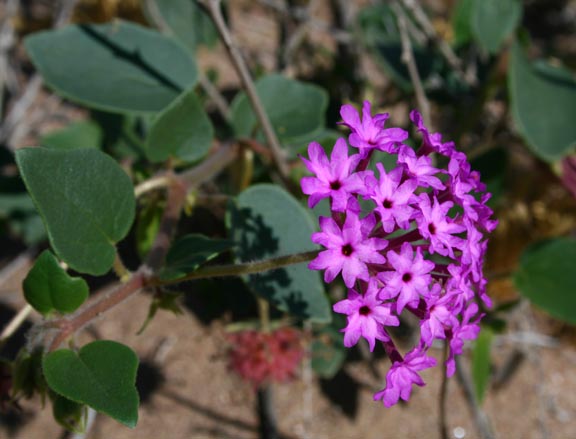Abronia
|
Family: Nyctaginaceae |
Herbs, annual or perennial, sometimes cespitose or appearing acaulescent, usually viscid-pubescent, from slender to stout taproot (extensively rhizomatous in Abronia bolackii). Stems prostrate to erect, unarmed, without glutinous bands on internodes. Leaves usually basal and cauline (all basal in A. bigelovii and A. nana), unequal in each pair, petiolate; blade ± thick and succulent, base usually asymmetric. Inflorescences axillary (appearing scapose in A. bigelovii and A. nana), pedunculate, capitate clusters, with peripheral flowers usually opening first; receptacle slightly rounded to conic, without pedicel-like projections; bracts persistent, not accrescent, 5-10, distinct, forming involucre, lanceolate to broadly ovate, thinly papery or scarious, translucent, occasionally thin and green. Flowers bisexual, chasmogamous; perianth radially symmetric, funnelform or salverform, constricted distal to ovary, abruptly expanded to 5-lobed limb; stamens 5-9, included; styles included; stigmas linear. Fruits winged or not, usually fusiform or turbinate, in profile rhombic, cordate, or obdeltate, coriaceous, glabrate to viscid puberulent; wings 2-5, opaque, subtly veined, not or only slightly extending beyond apex or base of body, distal margins sometimes dilated and flattened, broader than lamina, interior hollow, forming cavity, or filled with spongy tissue; sulci smooth or slightly rugose. Mature to near-mature fruits are usually required for identification of Abronia species because of the variation of vegetative structures within each taxon. Abronia appears to be in a state of active evolution. Cross-pollination readily occurs in the greenhouse, producing a variety of hybrids. Hybridization occasionally occurs in the field.
|

